Palm Sugar Wajik
Palm Sugar Wajik is a beloved Indonesian treat made from sticky rice, coconut milk, and palm sugar. It is chewy, caramel-sweet, and rich with coconut flavor. This simple treat is absolutely irresistible.
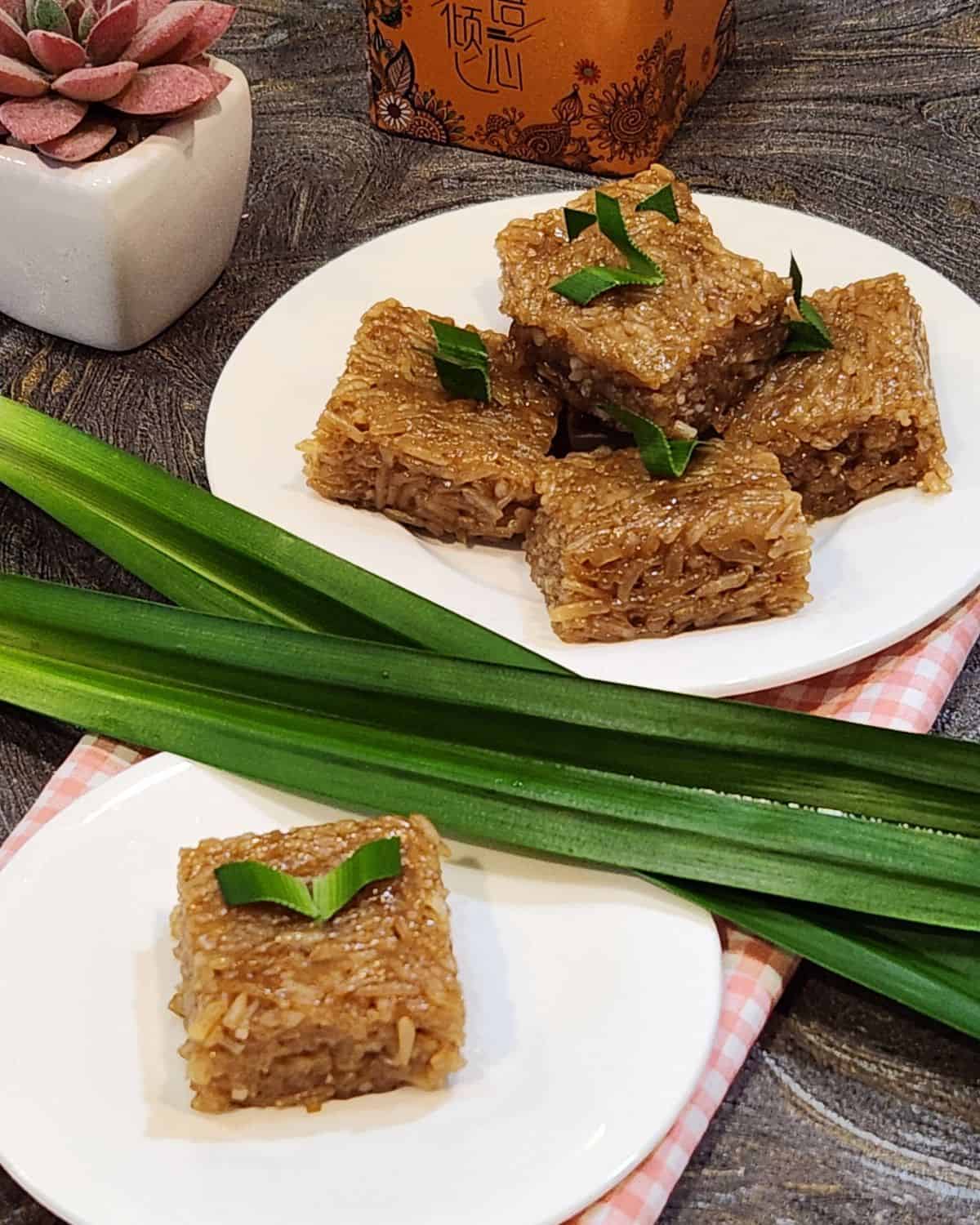
If you love sticky rice snacks like savory Lemper, creamy Mango Sticky Rice, or the sweet-spicy Ketan Serundeng, then Wajik deserves a spot on your must-try list. This traditional Indonesian treat is made from glutinous rice slowly cooked in rich coconut milk and coconut sugar (or gula jawa) or palm sugar, giving it a caramel hue and a chewy texture.
Unlike the brothy comfort of Pulut Hitam, Wajik is firm yet tender—sweet and fragrant. It’s one of those old time snack that feels both festive and familiar, one chewy square at a time.
Why You Will Love This Recipe
Recipe Ingredients
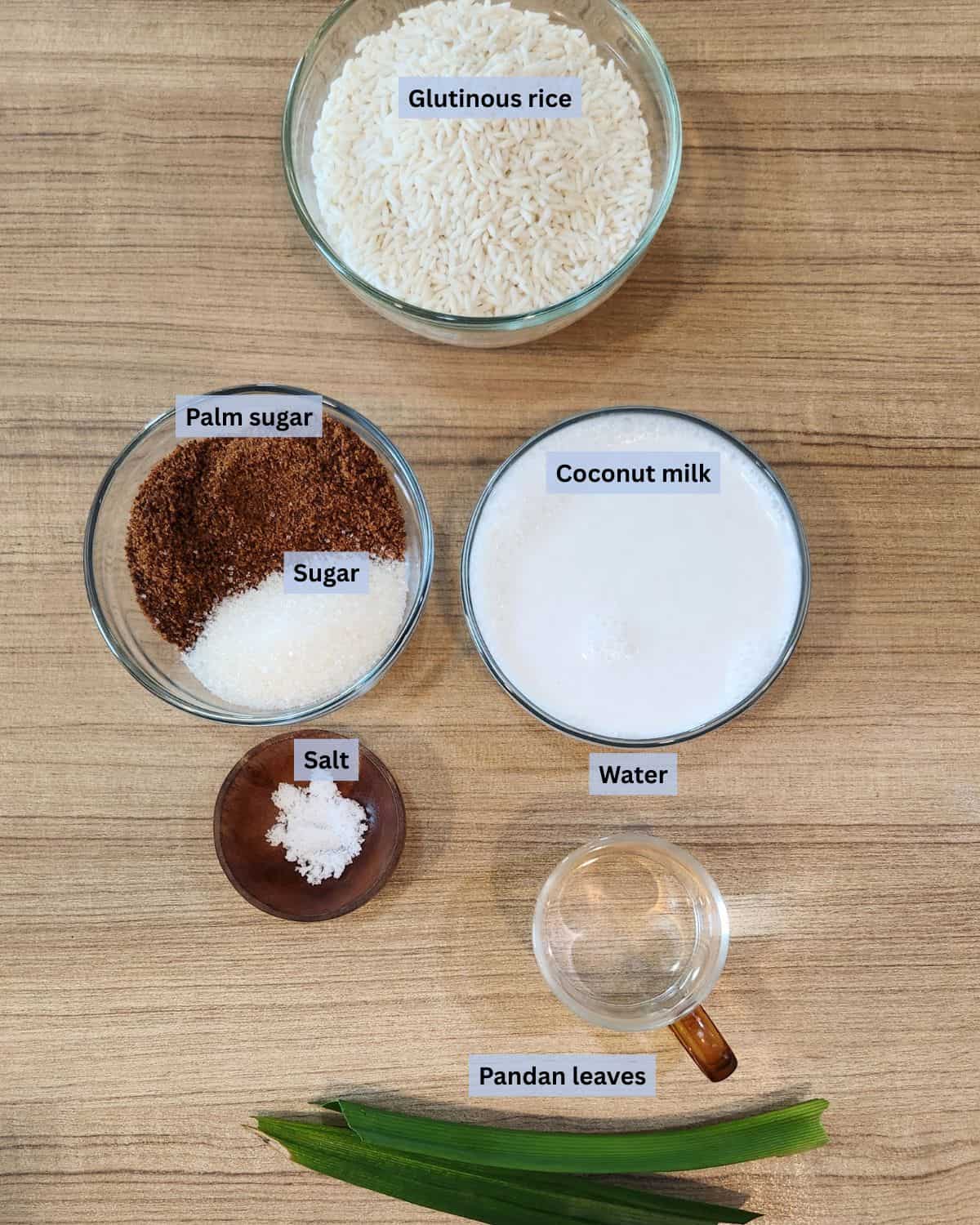
Variations
Some versions of Wajik play with color—like the eye-catching blue Wajik made with butterfly pea flower tea, or the fragrant pandan extract. While the blue version looks stunning, it tastes quite similar to Wajik Pandan since butterfly pea flower is flavorless and often paired with white sugar. For deeper, richer flavor, coconut or palm sugar is still the way to go.
How to Make Palm Sugar Wajik
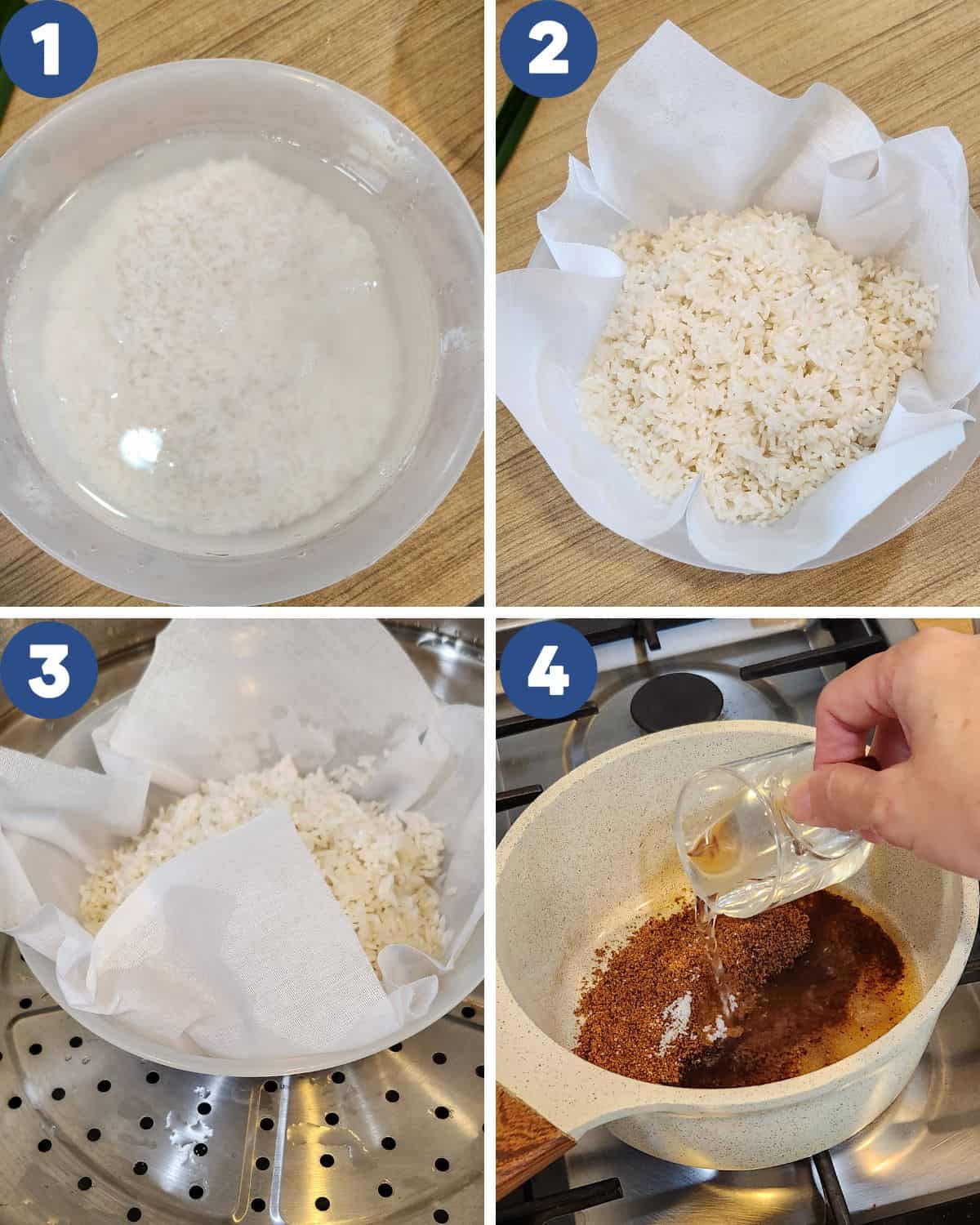
STEP 1. Wash the sticky rice 2–3 times until the water runs clear. Drain, then soak it in clean water for at least 2 hours (Image 1). After soaking, place the rice in a cloth-lined bowl and steam for 30 minutes (Images 2, 3). While the rice is steaming, start preparing the sugar mixture: combine palm sugar, white sugar, water, salt, and coconut milk in a saucepan (Image 4). Add pandan leaves for fragrance.
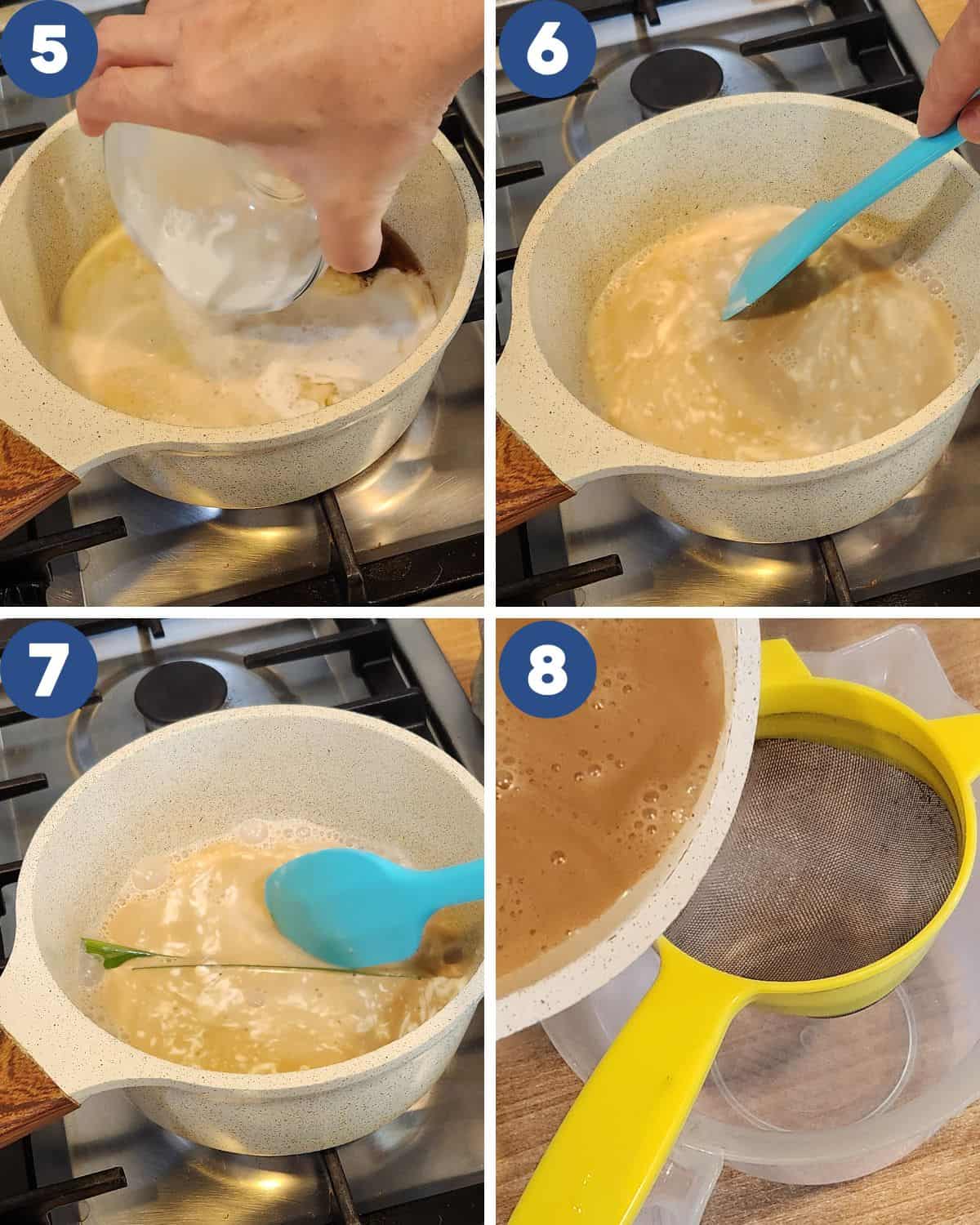
STEP 2. Bring the mixture to a gentle boil and cook until the sugar is fully dissolved (Images 5, 6, 7). Prepare a colander and a container to help strain the mixture (Image 8).
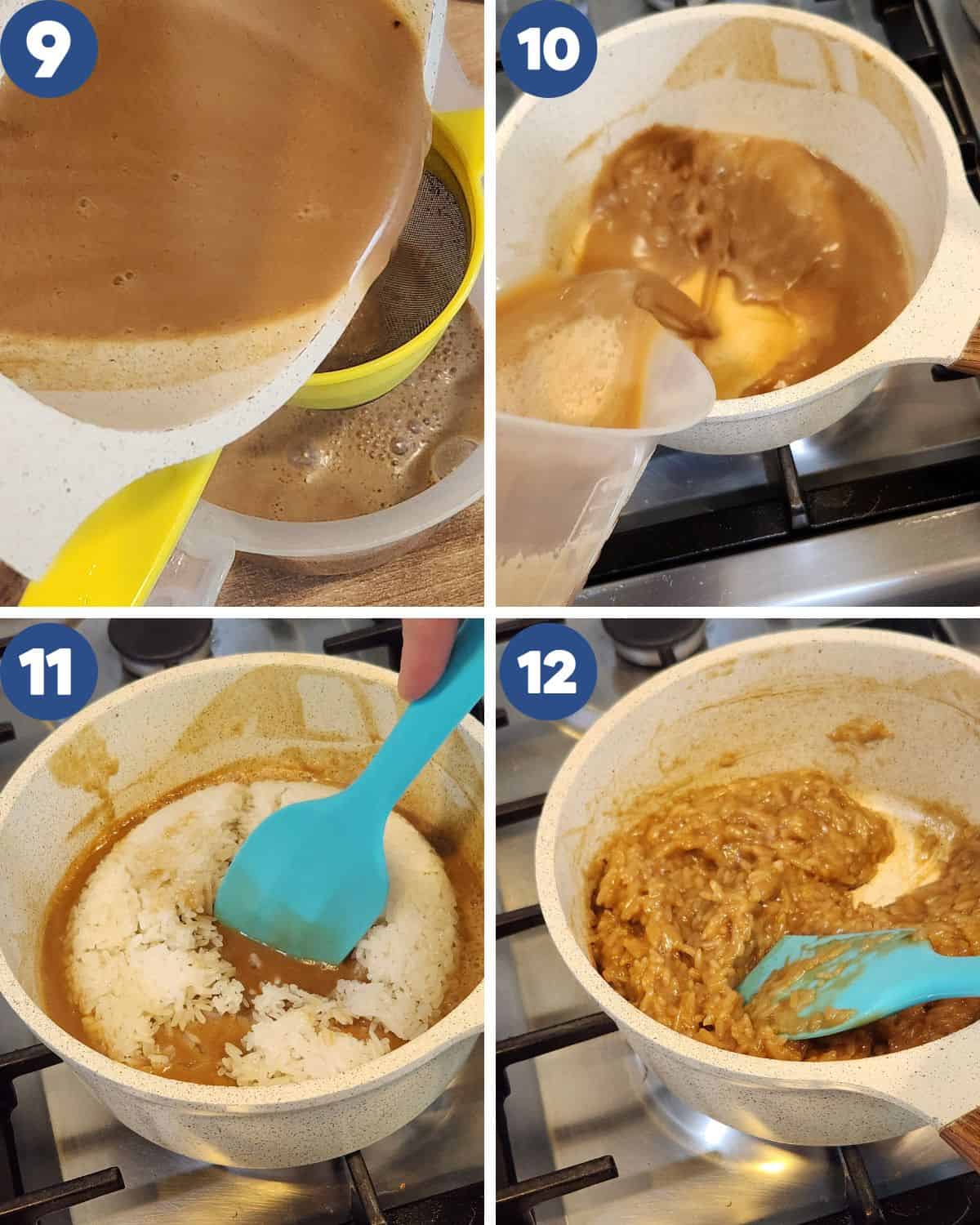
STEP 3. Strain the sugar mixture through a colander to remove any impurities (Image 9), then pour it back into the pan (Image 10). Add the steamed sticky rice and cook over low heat (Image 11), stirring constantly with a spatula (Image 12). Keep stirring until the sticky rice fully absorbs the sugar mixture and becomes thick and glossy.
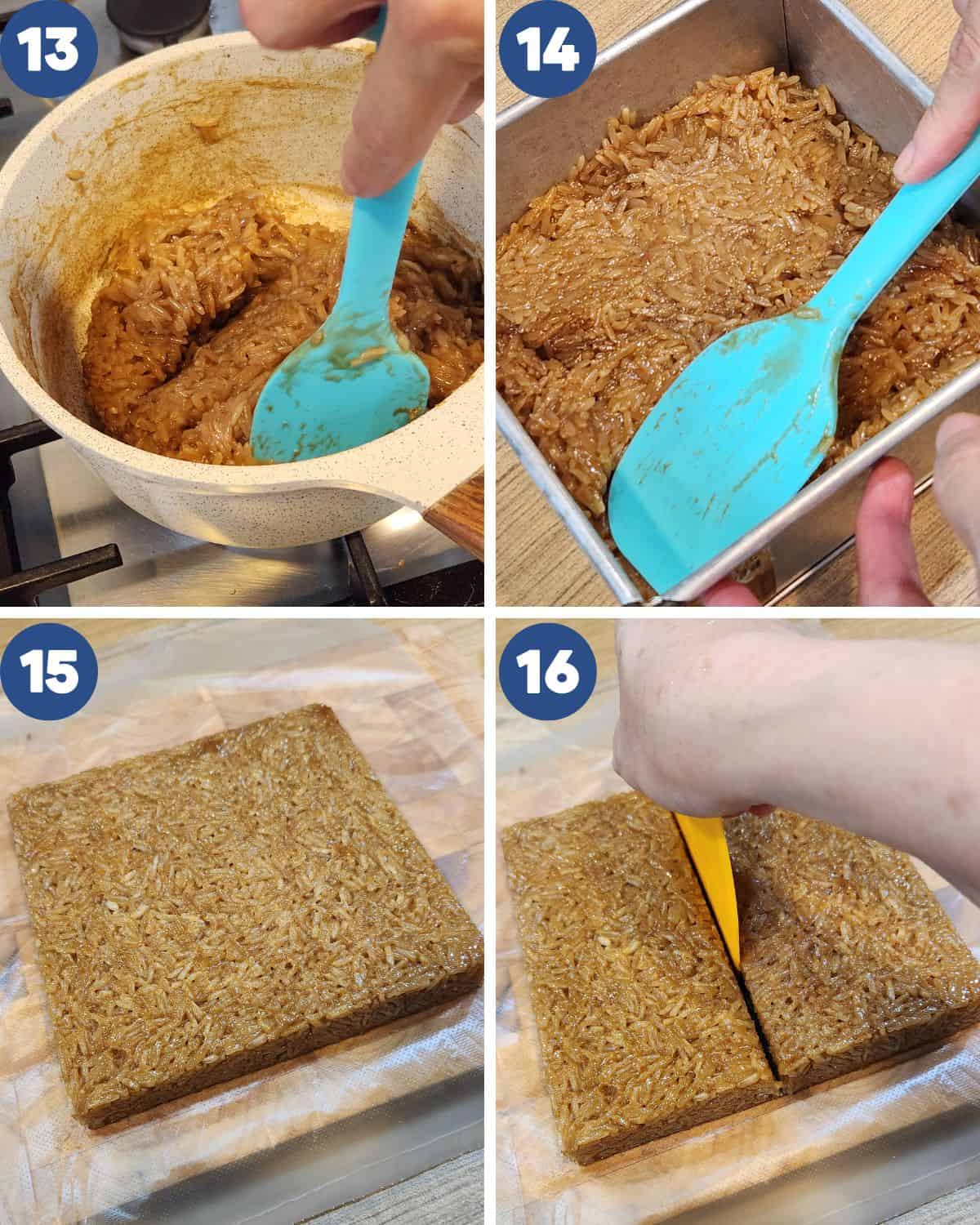
STEP 4. Once the mixture is thick and no liquid remains (Image 13), transfer it to a baking pan or pudding mold. Spread it out evenly and press it lightly with a spatula to compact it (Image 14). Let it cool completely at room temperature until firm enough to cut, take out from the pan (Image 15). Use a plastic knife greased with a little oil for cleaner cuts (Image 16). Enjoy your sweet, chewy Wajik!
Pro Tips
- Use high-quality palm sugar – The flavor of your wajik depends heavily on the sugar, so go for authentic gula jawa (coconut sugar) or gula aren (palm sugar) for that sweetness.
- Don’t skip the soaking – Soaking the glutinous rice helps it cook evenly and gives you that soft, chewy texture Wajik is known for.
- Stir patiently – Once the rice is in the sugar mixture, stir gently but consistently over low heat. It takes time, but this step is key to getting the sugar fully absorbed.
- Use a nonstick or heavy-bottomed pan – This helps prevent the rice from sticking or burning during the final cooking stage.
- Press evenly – When transferring to a mold or pan, use a spatula to gently press and flatten the surface so you get neat, compact slices later.
- Let it cool completely – Cutting too early can make the pieces fall apart. For best results, wait until it’s fully cooled and firm.
- Oil your knife – Use a plastic knife lightly greased with oil to slice cleanly without sticking or tearing the pieces.
How to Serve
Wajik is best enjoyed at room temperature once it’s fully set and firm. Serve it as a sweet afternoon treat or part of a traditional snack platter. Pair it with a warm cup of wedang jahe. On a warmer day, you can go for a glass of refreshing lemongrass tea.
Pair your wajik with serabi pandan, a drizzle of coconut jam (kaya), or soft, pillowy apem cake. They are perfect for a small gathering in the afternoon.
FAQs about Wajik
Wajik is a traditional Indonesian sweet made from glutinous (sticky) rice, coconut milk, and palm sugar or coconut sugar. It has a chewy, sticky texture and a rich, caramel-like flavor.
Yes! Wajik is naturally gluten-free since it’s made with glutinous rice (which contains no gluten), coconut milk, and sugar.
You can, but it’s not ideal. Freezing may affect the chewy texture. If you must freeze it, wrap tightly in plastic and thaw at room temperature—avoid reheating in the microwave. Steaming will help bring back toe chewy texture.
You can, but the flavor will be much lighter and less caramel-like. Palm or coconut sugar gives Wajik its signature rich, earthy taste and dark color.
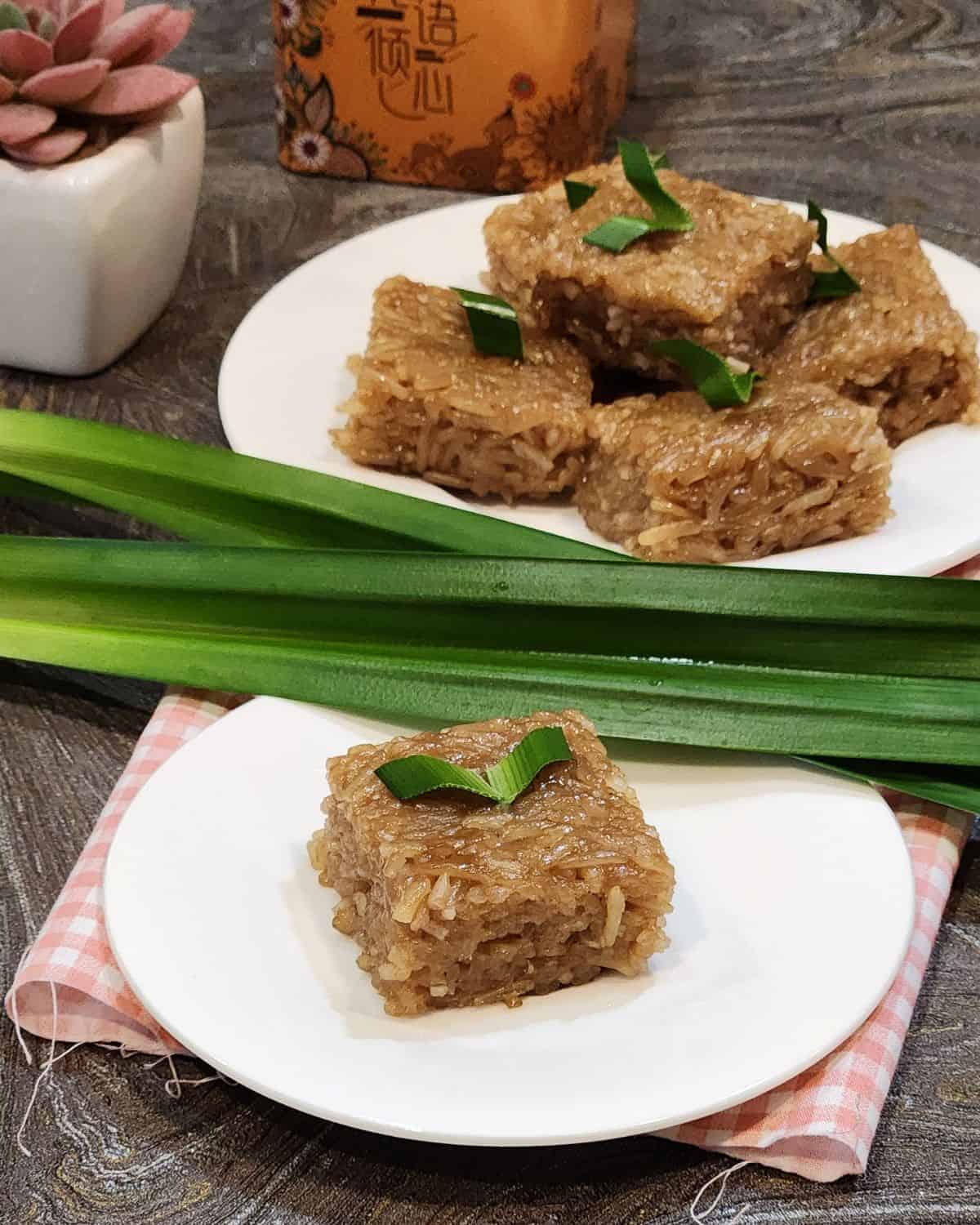
Storage
Wajik can last up to 2 days at room temperature in an airtight container. If you’re in a humid climate, it’s best stored in the fridge. Let it come to room temp before serving for the best texture.
More Indonesian Snack Recipes
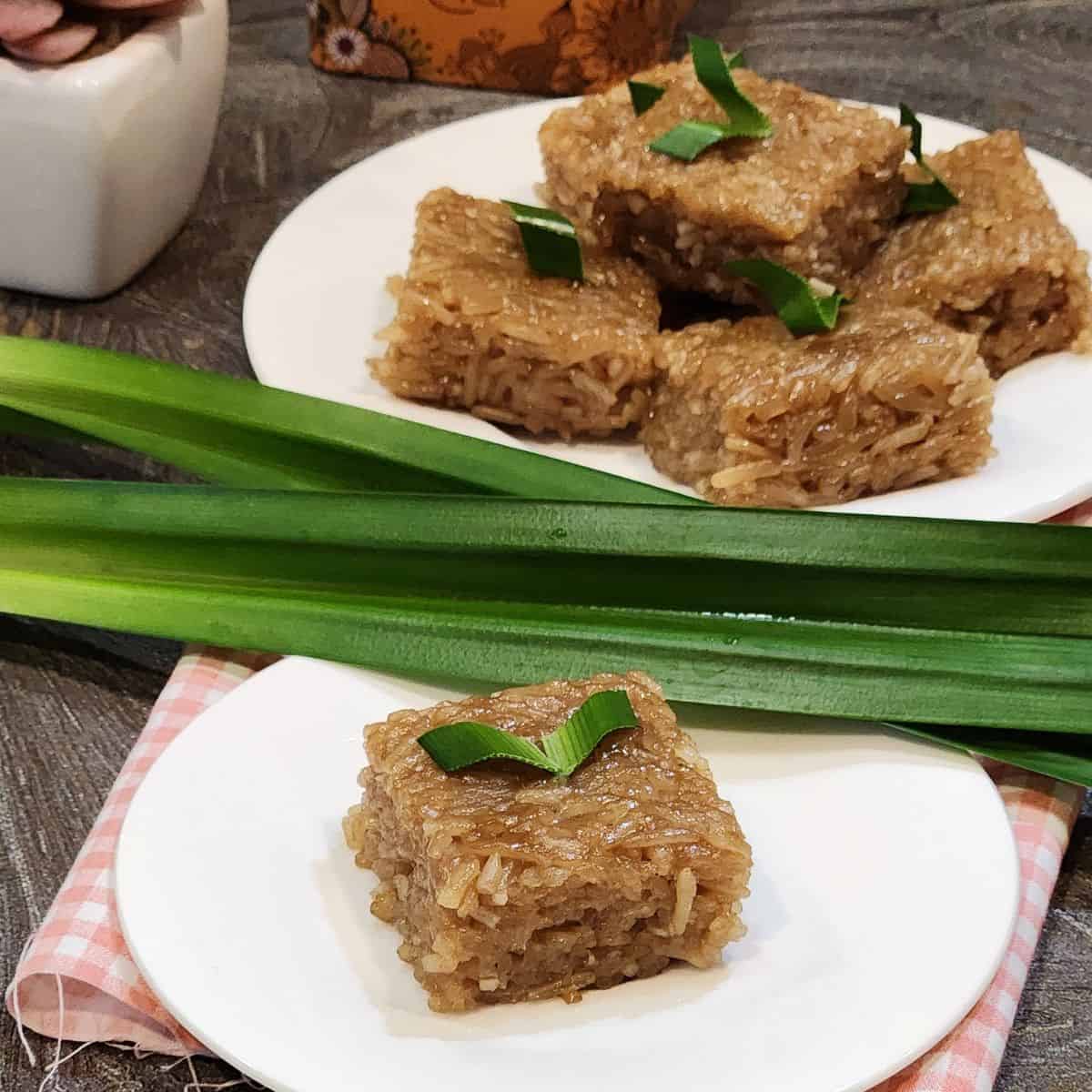
Palm Sugar Wajik
Ingredients
- 250 gr glutinous rice
- 90 gr palm sugar
- 60 gr white sugar
- 75 ml water
- ¼ tsp salt
- 200 ml coconut milk
- 2 pcs pandan leaves
Instructions
- Wash the sticky rice 2–3 times until the water runs clear. Drain, then soak it in clean water for at least 2 hours. After soaking, place the rice in a cloth-lined bowl and steam for 30 minutes. While the rice is steaming, start preparing the sugar mixture: combine palm sugar, white sugar, water, salt, and coconut milk in a saucepan. Add pandan leaves for fragrance.
- Bring the mixture to a gentle boil and cook until the sugar is fully dissolved. Prepare a colander and a container to help strain the mixture.
- Strain the sugar mixture through a colander to remove any impurities, then pour it back into the pan. Add the steamed sticky rice and cook over low heat, stirring constantly with a spatula. Keep stirring until the sticky rice fully absorbs the sugar mixture and becomes thick and glossy.
- Once the mixture is thick and no liquid remains, transfer it to a baking pan or pudding mold. Spread it out evenly and press it lightly with a spatula to compact it. Let it cool completely at room temperature until firm enough to cut, take out from the pan. Use a plastic knife greased with a little oil for cleaner cuts. Enjoy your sweet, chewy Wajik!
Video
Notes
- Use high-quality palm sugar – The flavor of your wajik depends heavily on the sugar, so go for authentic gula jawa (coconut sugar) or gula aren (palm sugar) for that sweetness.
- Don’t skip the soaking – Soaking the glutinous rice helps it cook evenly and gives you that soft, chewy texture Wajik is known for.
- Stir patiently – Once the rice is in the sugar mixture, stir gently but consistently over low heat. It takes time, but this step is key to getting the sugar fully absorbed.
- Use a nonstick or heavy-bottomed pan – This helps prevent the rice from sticking or burning during the final cooking stage.
- Press evenly – When transferring to a mold or pan, use a spatula to gently press and flatten the surface so you get neat, compact slices later.
- Let it cool completely – Cutting too early can make the pieces fall apart. For best results, wait until it’s fully cooled and firm.
- Oil your knife – Use a plastic knife lightly greased with oil to slice cleanly without sticking or tearing the pieces.
Nutrition

Pandan Wajik Sticky Rice Cake
Ingredients
- 250 gr glutinous rice
- 100 gr white sugar
- ¼ tsp salt
- 250 ml coconut milk 200 ml coconut milk+50 ml water
- 40 ml pandan extract
Instructions
- Soak the glutinous rice overnight. The next day, steam for 30 minutes.
- Cook sugar, salt, and coconut milk together in a sauce pan until the sugar dissolves. Let it cool.
- After steaming, put the sticky rice in a sauce pan, pour the pandan sugar mixture. Cook until the sugar is absorbed completely by the sticky rice.
- Transfer to a baking pan lined with banana leaf or into a mold.
- Spread evenly and press lightly.
- Let it cool completely.
- Cut according to your preference. Enjoy!







I’ve been intimidated to try making sticky rice cake, but your recipe is easy and concise. Delicious!
I love this palm sugar wajik for it’s so easy to make and also the result is so good. It is chewy with the caramel of palm sugar.